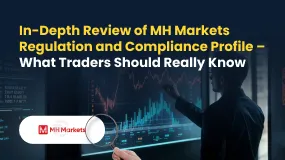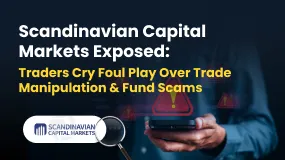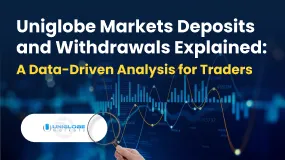简体中文
繁體中文
English
Pусский
日本語
ภาษาไทย
Tiếng Việt
Bahasa Indonesia
Español
हिन्दी
Filippiiniläinen
Français
Deutsch
Português
Türkçe
한국어
العربية
Oil Hits 7-Year High. Should We Brace for a Steep Decline?
Abstract:How concerned should investors be about market exuberance and a potential correction ahead?

Oil serves as an investment vehicle and an input cost for almost every commercial good.
The global economy has managed to shake off the pandemic shackles, resulting in growing demand for crude oil markets. Demand growth averaged 5.5 million barrels per day (bpd) in 2021, pushing WTI to become the best performing non-crypto asset class. Crude continued to rally as we entered the new year, hitting a 7-year high in January. While some investors braced for a sharp downturn, oil exhibited great resilience. Crude breached the important $90 per barrel resistance level, only to climb past $92 by February 4.
The record run had very few detractors. Money managers had a long position volume of almost 340,000 in WTI crude, eclipsing their short positions of around 27,000, in January. Market volatility threatened to spike early in the year but quickly returned to medium-term averages. Oil serves both as an investment vehicle and an input cost for almost every commercial good, and its price is critical to a wide range of investments. So, how concerned should investors be about market exuberance and a potential correction ahead?
Well Take It Lock, Stock, and Barrel
The global economy needs oil to keep its wheels greased. In its January 2022 meeting, the OPEC+ raised its demand forecast by 260,000 bpd, citing stronger demand from the advanced economies despite the spread of the Omicron variant. In the US, for example, November 2021 saw traffic reaching the highest in a decade, 12% more than in November 2020, when there were restrictions to curb the Delta variant. Although Omicron cases rose, restrictions were significantly less harsh, dampening the virus's impact on oil demand. Developing nations also exhibited demand resilience, with rising traffic and factory activity in Asia.
Demand for crude as a substitute for natural gas has also recently grown. Natural gas contract prices have not only surged but also remained incredibly volatile. The IEA estimated this trend towards crude as a substitute to have created the demand for 100,000 bpd in December. This is also reflected in the largely positive sentiment for oil and the overly negative one for natural gas on Acuitys Trading Dashboard.
Additionally, the demand strength is evident in the markets forward curve. Brent crude backwardation, the difference between front-month contract and 6-month due contract, has climbed to its steepest since 2013.
The IEA also revised its total demand forecast for 2022 to a whopping 99.7 million bpd, which is 200,000 bpd higher than the pre-pandemic levels in 2019. The OPEC's Joint Technical Committee (JTC) is more optimistic, predicting oil demand to grow by 4.2 million bpd this year.

Disclaimer:
The views in this article only represent the author's personal views, and do not constitute investment advice on this platform. This platform does not guarantee the accuracy, completeness and timeliness of the information in the article, and will not be liable for any loss caused by the use of or reliance on the information in the article.
Read more

In-Depth Review of MH Markets Regulation and Compliance Profile – What Traders Should Really Know
This in-depth analysis provides a data-driven examination of the MH Markets regulation and compliance profile. Drawing primarily on verified data from the global broker inquiry app WikiFX, supplemented by public records, we will dissect the broker's multi-jurisdictional licensing, evaluate the real-world protections offered to traders, and interpret the warnings and ratings that define its standing in the competitive forex and CFD landscape.

In-Depth Uniglobe Markets Regulation and License Overview: A Trader's Due Diligence Report
This in-depth overview will conduct a thorough Uniglobe Markets regulatory status and financial authority check. By dissecting data from regulatory bodies, corporate registries, and user-reported experiences, we will provide a clear, data-driven analysis of the protections—or lack thereof—afforded to clients. The central question we aim to answer is whether Uniglobe Markets meets the stringent safety standards required by serious, long-term traders.

Scandinavian Capital Markets Exposed: Traders Cry Foul Play Over Trade Manipulation & Fund Scams
Does Scandinavian Capital Markets stipulate heavy margin requirements to keep you out of positions? Have you been deceived by their price manipulation tactic? Have you lost all your investments as the broker did not have risk management in place? Were you persuaded to bet on too risky and scam-ridden instruments by the broker officials? These are some burning issues traders face here. In this Scandinavian Capital Markets review guide, we have discussed these issues. Read on to explore them.

Uniglobe Markets Deposits and Withdrawals Explained: A Data-Driven Analysis for Traders
For any experienced trader, the integrity of a broker isn't just measured in pips and spreads; it's fundamentally defined by the reliability and transparency of its financial operations. The ability to deposit and, more importantly, withdraw capital seamlessly is the bedrock of trust between a trader and their brokerage. When this process is fraught with delays, ambiguity, or outright failure, it undermines the entire trading relationship. This in-depth analysis focuses on Uniglobe Markets, a broker that has been operational for 5-10 years and presents itself as a world-class trading partner. We will move beyond the marketing claims to scrutinize the realities of its funding mechanisms. By examining available data on Uniglobe Markets deposits and withdrawals, we aim to provide a clear, evidence-based picture for traders evaluating this broker for long-term engagement. Our investigation will be anchored primarily in verified records and user exposure reports to explain the Uniglobe Mar
WikiFX Broker
Latest News
Gratitude Beyond Borders: WikiFX Thank You This Thanksgiving
MH Markets Commission Fees and Spreads Analysis: A Data-Driven Breakdown for Traders
Alpha FX Allegations: Traders Claim Account Blocks, Withdrawal Denials and Security Breaches
How to Become a Profitable Forex Trader in Pakistan in 2025
CFTC Polymarket Approval Signals U.S. Relaunch 2025
Zipphy Exposed: No Valid Regulation, Risk Warning
KEY TO MARKETS Review: Are Traders Facing Withdrawal Delays, Deposit Issues & Trade Manipulation?
FCA Consumer Warning – FCA Warning List 2025
Australia’s Fraud-Intel Network Exposes $60M in Scams
Malaysia’s SkyLine Guide Top 25 Brokers Are Out!
Currency Calculator



